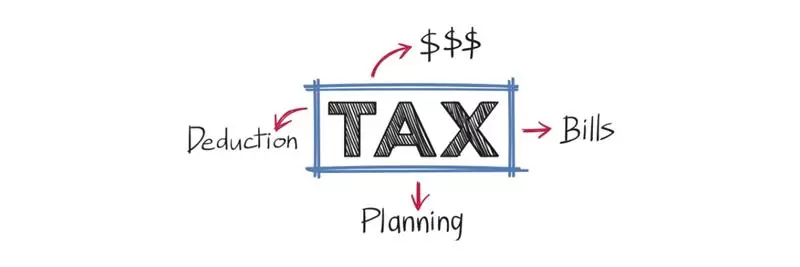Tax advisory firms in India have been keeping a close watch on the Income Tax Rules for FY 2025, ensuring individuals and businesses are aware of the latest changes. With the government introducing several reforms in slabs, deductions, compliance, and digital processes, understanding these rules is crucial to stay compliant and maximize tax benefits.

Key Objectives of FY 2025 Income Tax Rules
The Income Tax Rules for FY 2025 focus on:
- Simplifying the tax filing process with digital solutions.
- Encouraging transparent and paperless compliance.
- Reducing tax burden on middle-income taxpayers.
- Supporting startups and SMEs with flexible filing and deduction rules.
These reforms aim to make taxation more efficient while promoting a robust financial ecosystem.
Revised Income Tax Slabs for FY 2025-26 (Assessment Year 2026-27)
The government has introduced updated tax slabs under the new tax regime to provide relief to taxpayers.
| Annual Income (₹) | Tax Rate (New Regime) |
| Up to 4,00,000 | Nil |
| 4,00,001 – 8,00,000 | 5% |
| 8,00,001 – 12,00,000 | 10% |
| 12,00,001 – 16,00,000 | 15% |
| 16,00,001 – 20,00,000 | 20% |
| 20,00,001 – 24,00,000 | 25% |
| Above 24,00,000 | 30% |
Impact: These changes benefit middle-class taxpayers, reduce tax stress, and encourage voluntary compliance.
Standard Deduction and Section 87A Rebate
- Standard Deduction: ₹50,000 for salaried employees and pensioners (New Tax Regime) / ₹75,000 (Old Tax Regime).
- Rebate under Section 87A: Taxpayers with annual income up to ₹12 lakh can enjoy full tax rebate.
| Section | Previous FY 2024 Rules | FY 2025-26 Rules | Impact |
| Standard Deduction | ₹50,000 | ₹75,000 (New Tax Regime) | Provides relief for salaried employees & pensioners; higher deduction under old regime increases tax savings |
| Rebate 87A | Income up to ₹5 lakh | Income up to ₹12 lakh | Increased relief for middle-income taxpayers under new tax regime |
Tax Compliance for Businesses
For businesses, FY 2025 introduces measures that simplify accounting and reporting:
- Tax Audit Report Deadline: October 31, 2025, for companies and firms needing audit.
- Faceless Assessment: Fully digital scrutiny to reduce human intervention and enhance transparency.
- TDS/TCS Updates: Revised thresholds and reporting timelines for SMEs and startups.
Tip: Engaging accounting advisory services in India can help businesses avoid errors and optimize filing.
Digital Compliance and ITR Filing
The government continues to promote digital tax filing and faceless assessments:
| Initiative | Purpose | Benefit |
| AIS 2.0 | Tracks real-time income and TDS | Reduces mismatch and errors |
| Pre-filled ITR forms | Salary, TDS, and bank interest auto-filled | Faster, error-free filing |
| Faceless Assessment 2.0 | Online scrutiny of returns | Transparency and reduced human bias |
With these tools, individuals and companies can save time while ensuring full compliance.
Why Professional Advisory Matters
Despite simplifications, expert guidance is still essential:
- Tax planning and optimization using accounting financial advisory.
- Correct selection between old and new tax regimes.
- Assistance with TDS, TCS, and audit filings.
- Strategic investment planning considering capital gains and exemptions.
Professional advisory ensures legal compliance while maximizing tax efficiency.
Key Takeaways for Taxpayers
- Review your salary and income sources before filing.
- Utilize Section 80C, 80D, and NPS deductions where applicable.
- Keep digital records of all investments and deductions.
- File returns before deadlines to avoid penalties.
- Consider consulting tax advisory firms in India or accounting advisory services in India for accurate guidance.
Conclusion
The Latest Income Tax Rules for FY 2025 introduce reliefs, digital solutions, and transparent compliance processes for individuals and businesses. From revised tax slabs to faceless assessments and clarified capital gains rules, these updates ensure an efficient taxation framework.
For comprehensive support and to maximize tax benefits, partnering with accounting firms in India is the best approach. Expert guidance ensures compliance, accurate filing, and strategic financial planning for FY 2025 and beyond.
FAQs
Q1. How is 12 lakh tax free?
For FY 2025-26, individuals earning up to ₹12 lakh are eligible for a full rebate under Section 87A. This means their total income is effectively tax-free, and they do not need to pay any income tax if it falls within this limit.
Q2. Who is eligible for an 87A rebate?
For FY 2025-26, the Section 87A rebate is available to individual taxpayers whose total annual income does not exceed ₹12 lakh. Eligible taxpayers can claim a full rebate, effectively reducing their income tax liability to zero.
Q3. What is the tax slab for AY 2025-26?
For AY 2025-26 under the new tax regime, income up to ₹4,00,000 is tax-free. Incomes from ₹4,00,001 to ₹8,00,000 are taxed at 5%, ₹8,00,001 to ₹12,00,000 at 10%, ₹12,00,001 to ₹16,00,000 at 15%, ₹16,00,001 to ₹20,00,000 at 20%, ₹20,00,001 to ₹24,00,000 at 25%, and above ₹24,00,000 at 30%.
